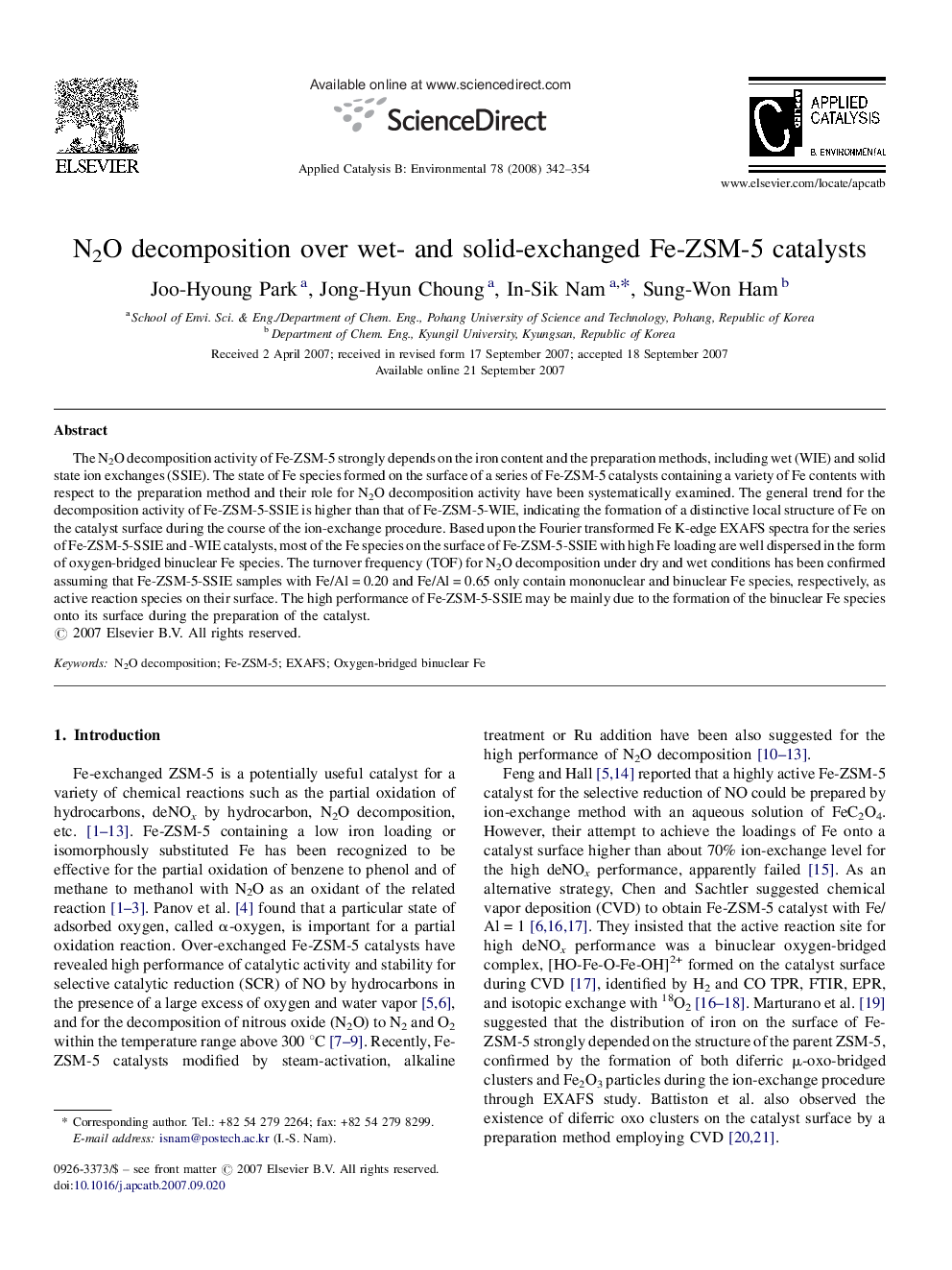| Article ID | Journal | Published Year | Pages | File Type |
|---|---|---|---|---|
| 48322 | Applied Catalysis B: Environmental | 2008 | 13 Pages |
The N2O decomposition activity of Fe-ZSM-5 strongly depends on the iron content and the preparation methods, including wet (WIE) and solid state ion exchanges (SSIE). The state of Fe species formed on the surface of a series of Fe-ZSM-5 catalysts containing a variety of Fe contents with respect to the preparation method and their role for N2O decomposition activity have been systematically examined. The general trend for the decomposition activity of Fe-ZSM-5-SSIE is higher than that of Fe-ZSM-5-WIE, indicating the formation of a distinctive local structure of Fe on the catalyst surface during the course of the ion-exchange procedure. Based upon the Fourier transformed Fe K-edge EXAFS spectra for the series of Fe-ZSM-5-SSIE and -WIE catalysts, most of the Fe species on the surface of Fe-ZSM-5-SSIE with high Fe loading are well dispersed in the form of oxygen-bridged binuclear Fe species. The turnover frequency (TOF) for N2O decomposition under dry and wet conditions has been confirmed assuming that Fe-ZSM-5-SSIE samples with Fe/Al = 0.20 and Fe/Al = 0.65 only contain mononuclear and binuclear Fe species, respectively, as active reaction species on their surface. The high performance of Fe-ZSM-5-SSIE may be mainly due to the formation of the binuclear Fe species onto its surface during the preparation of the catalyst.
